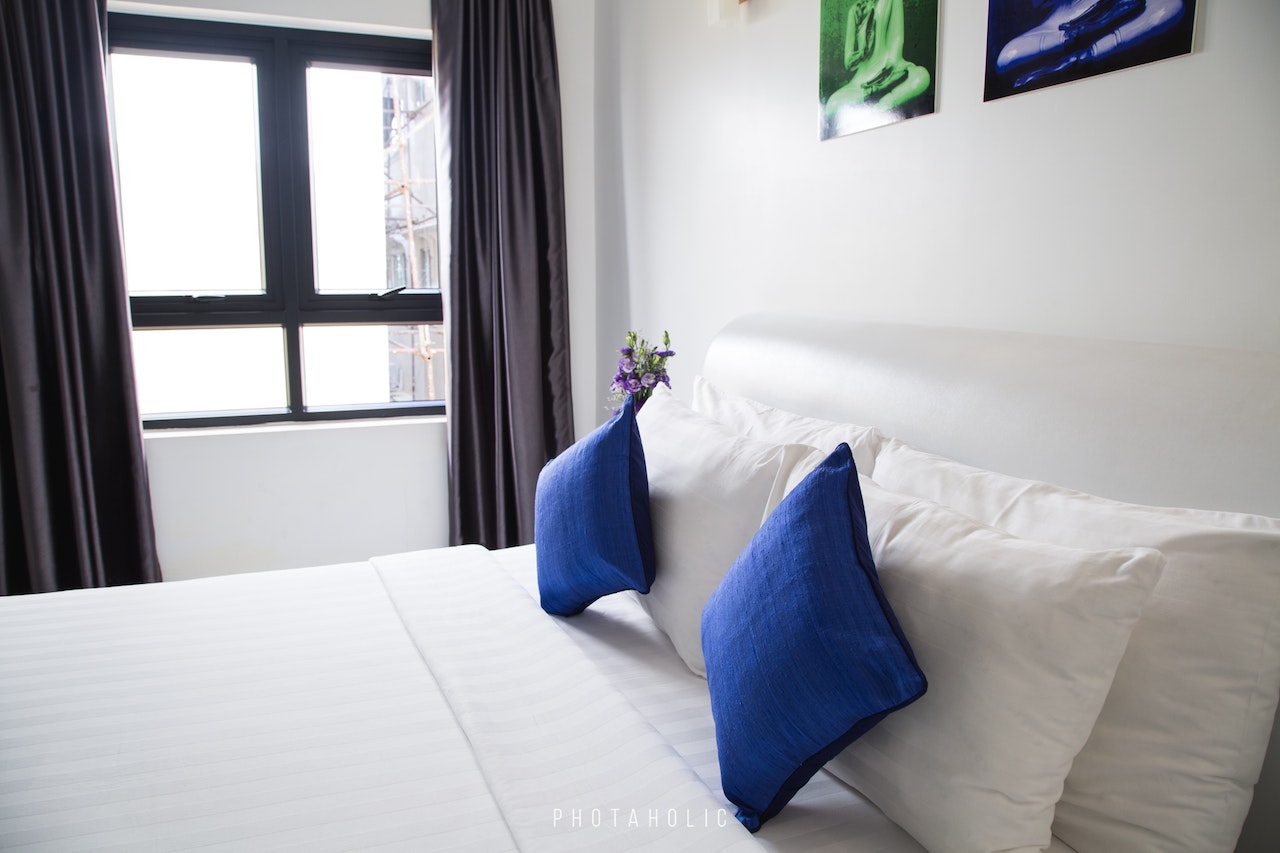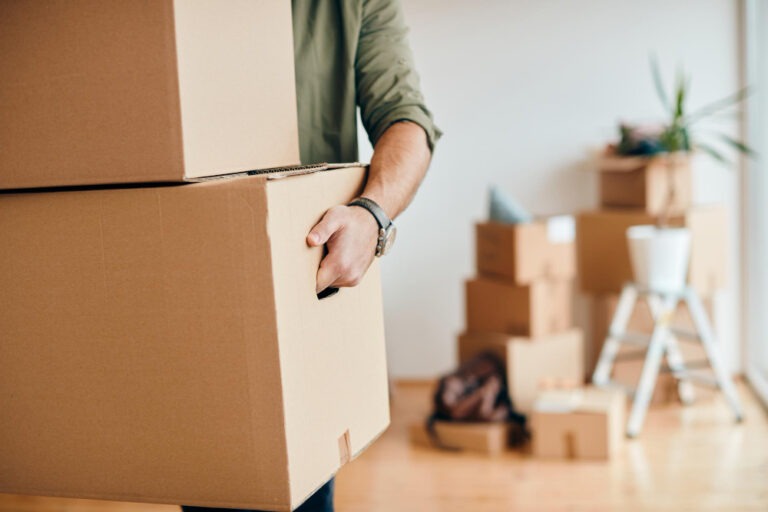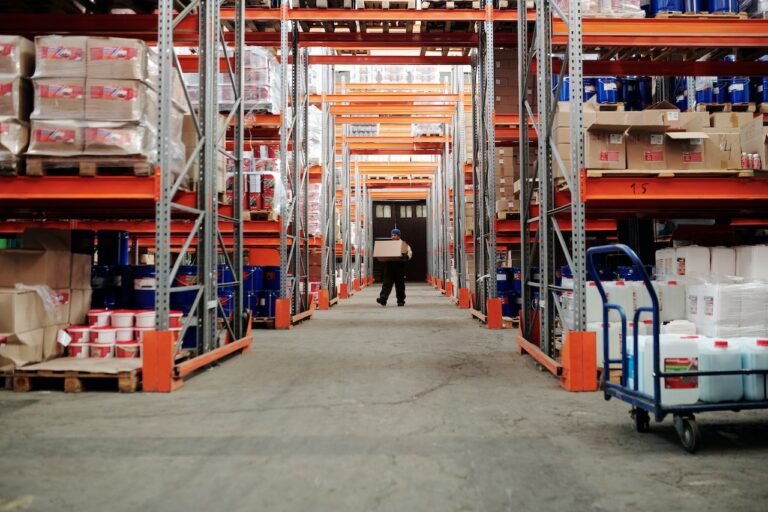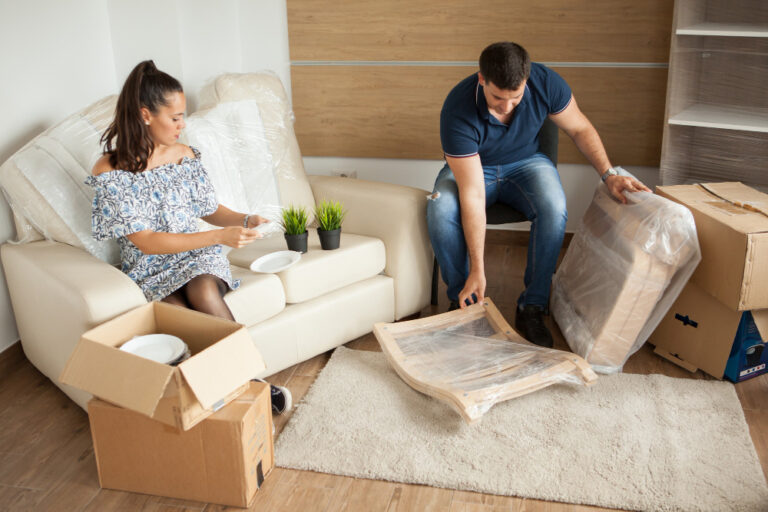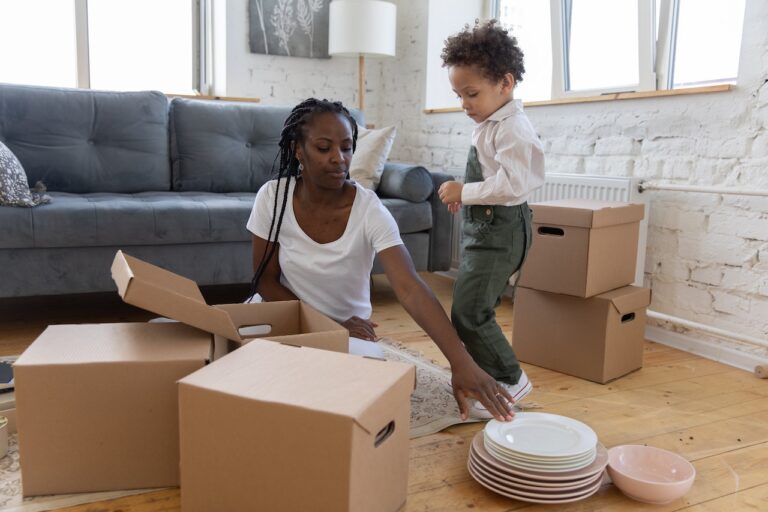Moving can be a daunting task, and among the myriad of items to be transported, your mattress often stands out due to its size and value. Ensuring that it’s packed correctly is not just about maintaining its physical condition but also about preserving the comfort and health benefits it offers.
An improperly packed mattress can be exposed to dirt, moisture, and pests, which can compromise its longevity and hygiene. Friends Moving, with its years of expertise in the relocation industry, emphasizes the significance of packing mattresses with precision.
Recognizing the mattress as more than just another item to move, they treat it as a valuable investment that deserves meticulous care and attention during transit.
Why It’s Essential to Pack Your Mattress Properly
When preparing for a move, it’s easy to focus on the more fragile items like glassware or electronics. However, your mattress, often a significant investment both financially and in terms of your well-being, requires equal attention. Here’s why packing your mattress correctly is non-negotiable:
- Value for Money: Mattresses can be expensive. Protecting them ensures you get the most out of your investment.
- Longevity: Proper packing can extend the life of your mattress, saving you from early replacement costs.
- Health Concerns: An exposed mattress can attract dust mites, bed bugs, and other pests, leading to potential health issues.
- Hygiene: Keeping your mattress clean during the move prevents the accumulation of dirt and allergens.
- Comfort: A damaged or dirty mattress can compromise comfort, affecting your sleep quality.
- Safety: Proper packing reduces the risk of injury when moving the mattress, as it prevents it from being unwieldy or causing trips and falls.
- Peace of Mind: Knowing your mattress is safe and protected provides peace of mind during an often stressful moving process.
In essence, the care you invest in packing your mattress not only safeguards a significant financial investment but also ensures continued comfort and health in your new home.
Read More: Understanding Moving Insurance in Vero Beach
Materials You’ll Need to Pack a Mattress
Packing a mattress for a move isn’t just about wrapping it up and hoping for the best. It requires specific materials designed to offer maximum protection against potential damage, dirt, and wear. Here’s a detailed breakdown of the essential materials you’ll need to ensure your mattress reaches its new destination in pristine condition:
1. Mattress Bags
When it comes to moving, especially a memory foam mattress, the mattress bag is your first line of defense. These bags, suitable for most mattresses, including memory foam mattresses, come in a variety of options, ranging from basic plastic covers to more robust, puncture-resistant materials.
The primary purpose of a mattress bag is to fit the entire mattress, whether it’s a mattress flat or a thicker variant, snugly., shielding it from potential threats like moisture, dirt, and pests. Some advanced bags even feature built-in handles, making the transportation process more manageable.
2. Sturdy Tape
The importance of reliable tape cannot be overstated when packing a mattress. While there are countless tapes available in the market, it’s crucial to opt for one that boasts strength and durability.
This ensures that once your mattress is safely ensconced in its protective bag, it remains sealed against external contaminants. A strong tape acts as a barrier, preventing the intrusion of dirt, moisture, and pests and ensuring that the mattress remains in pristine condition throughout the moving process.
3. Moving Blankets
Beyond the initial protection offered by mattress bags, moving blankets provide an added layer of security. These thick and padded blankets are designed to shield the mattress from potential bumps, scrapes, and punctures that can occur during the move.
When you wrap your mattress (which should already be in its protective bag) with these blankets, you’re safeguarding it from physical damage and enhancing its grip, making it easier to move. The soft texture of the blankets also ensures that the mattress’s fabric doesn’t suffer from abrasions.
4. Mattress Boxes
While many might overlook the importance of a mattress box, it plays a pivotal role in preserving the shape and integrity of your mattress during a move. These boxes are crafted specifically to house mattresses, offering a rigid protective layer against external pressures and potential damage.
When you place your mattress inside such a box, you’re ensuring that it retains its shape, which is especially crucial if other items get stacked on top during transportation. Additionally, these boxes provide an extra layer of defense against potential punctures, tears, or other forms of damage, ensuring your mattress arrives at its new destination in optimal condition.
5. Protective Corners and Edge Guards
One often overlooked aspect of mattress protection during a move is the vulnerability of its corners and edges. These areas are prone to wear, tear, and dents, especially when navigating through doorways or tight spaces. Protective corners and edge guards are designed to shield these sensitive areas of the mattress.
These durable guards fit snugly over the mattress’s corners and edges, providing a robust barrier against potential impacts. By using protective corners and edge guards, you not only maintain the structural integrity of your mattress but also ensure that its aesthetics remain unblemished during the relocation process.
Read More: Preparing for a Long-Distance Move from Vero Beach
Step-by-Step Guide to Pack a Mattress For Moving
Packing a mattress for a move is more than just rolling it up and tossing it into a truck. It’s a systematic process that ensures your mattress’s longevity, cleanliness, and shape.
By following a step-by-step guide, you can ensure that your mattress remains in top condition during the move and is ready for immediate use in your new home. Here’s a detailed breakdown of the process:
Step 1: Clean the Mattress
Start by thoroughly vacuuming the mattress using an upholstery attachment to remove dust or debris. A gentle dabbing with a mixture of mild detergent and water can be effective for any stubborn stains.
Letting the mattress dry completely after cleaning is crucial to prevent mold or mildew growth. This step not only ensures hygiene but also provides a fresh start in your new space.
Step 2: Slide the Mattress Into the Bag
The mattress bag is your primary shield against external contaminants during the move. To begin, ensure you’ve selected the right-sized bag for your mattress. Open the bag fully and position it in a way that allows for easy sliding of the mattress.
With the assistance of another person, gently lift the mattress and start sliding it into the bag. It’s essential to ensure that the mattress fits snugly inside, with no areas left exposed. This bag acts as a barrier against moisture, dirt, and pests, preserving the mattress’s integrity.
Step 3: Seal the Bag With Tape
Once the mattress is securely inside the bag, the next step is to seal it off from any potential external threats. Folding any excess material from the bag’s opening and sealing it tightly with durable tape ensures that no external elements, be it moisture, pests, or dirt, can infiltrate the bag during transit.
It’s essential to be thorough in this step, checking for any gaps or openings and addressing them immediately. A well-sealed mattress bag ensures the cleanliness and safety of the mattress throughout the move.
Step 4: Wrap With Moving Blankets
Moving blankets offer an additional layer of protection for your mattress. These thick, padded blankets are designed to shield the mattress from potential physical damages like bumps, scrapes, or punctures that might occur during the move. To wrap the mattress, lay out the moving blankets flat on the ground and place the bagged mattress on top.
Then, wrap the blankets around the mattress, ensuring complete coverage. Once wrapped, the blankets can be secured using moving straps or sturdy tape. This step not only offers protection but also provides an added grip, making the mattress easier to move.
Step 5: Place in the Mattress Box
For those looking for maximum protection, a mattress box is the final layer of defense. These boxes, specifically designed to house mattresses, provide a rigid protective layer against any external pressures or potential damages. To use, simply open the mattress box and, with the help of another person, lift and slide the wrapped mattress inside.
The box ensures that the mattress retains its shape during the move, which is especially vital if other items might be stacked on top during transportation. Once the mattress is securely inside, the box should be sealed tightly with tape, ensuring a safe and protected transit for your mattress.
Step 6: Label the Mattress Box
Labeling helps in easy identification, ensuring that movers handle the mattress with care and place it in the right location in the moving truck to avoid any potential damage.
A bold marker to write “MATTRESS” on multiple sides of the box. If you have multiple mattresses, specify the type (e.g., “Queen Mattress” or “Child’s Mattress”). Additionally, marking “Fragile” or “Handle with Care” can prompt extra caution.
Step 7: Prepare for Unpacking
Even after reaching your new home, the job isn’t quite done. Preparing for the unpacking process can make the transition smoother. Before unloading the mattress, ensure the path from the moving truck to the bedroom is clear of obstacles. This minimizes the risk of tripping or damaging the mattress.
Once in the desired room, carefully remove the mattress from the box, unwrap the moving blankets, and finally, take it out of the bag. Allow the mattress to air out for a few hours before setting it up on the bed frame. This ensures any trapped moisture or odors dissipate, giving you a fresh start in your new home.
Friends Moving: Expertise in Mattress Transportation
Relocating a mattress is no small feat, given its size, value, and the need to maintain its pristine condition. Friends Moving, with its vast experience and dedication, has emerged as a trusted name in mattress transportation. Here’s a snapshot of what makes them stand out:
- Specialized Equipment: Friends Moving utilizes top-tier equipment specifically designed for safe and efficient mattress transportation.
- Trained Professionals: Every mover undergoes rigorous training, ensuring they’re adept at handling mattresses with care and precision.
- Customized Packing Solutions: They offer tailored packing options, using high-quality materials to ensure your mattress’s utmost protection.
- Years of Experience: With over 15 years in the industry, Friends Moving boasts a legacy of excellence and customer satisfaction in mattress transportation.
- Customer-Centric Approach: They prioritize understanding and addressing each customer’s unique needs, ensuring a personalized and smooth moving experience.
- Affordable Pricing: Friends Moving offers top-notch mattress transportation services at competitive prices, striking the perfect balance between quality and affordability.
- Guaranteed Timeliness: Punctuality is a hallmark of their service, with a commitment to adhering to agreed-upon schedules and ensuring timely deliveries.
In essence, with Friends Moving, you’re entrusting your mattress to seasoned professionals who prioritize its safety and your satisfaction.
Read More: How to organize a stress-free move in Vero Beach
Common Mistakes to Avoid When Packing a Mattress
Packing a mattress for a move might seem straightforward, but there are common pitfalls that many individuals unknowingly fall into.
These mistakes can compromise the condition of your mattress and even affect your health and comfort in your new home. Here’s a quick rundown of what to watch out for:
- Not Cleaning the Mattress: Moving a dirty mattress can introduce allergens, dust, and pests to your new home, potentially affecting your health and sleep quality.
- Using Low-Quality Packing Materials: Skimping on packing materials can lead to damages like tears, stains, or moisture seepage, reducing the lifespan of your mattress.
- Not Securing the Mattress Properly: An improperly secured mattress can shift during transit, leading to potential physical damage or deformation.
- Ignoring the Weather: Not considering the weather conditions can expose the mattress to rain or excessive humidity, leading to potential mold growth or water damage.
- Failing to Label: Not labeling the mattress package can result in mishandling, especially if movers are unaware of the contents.
- Overloading the Moving Truck: Placing heavy items on top of a mattress can cause it to lose its shape or get damaged.
- Not Checking Storage Conditions: If storing, not ensuring a climate-controlled environment can expose the mattress to temperature fluctuations, leading to potential damages.
By being aware of these common mistakes and taking proactive measures to avoid them, you can ensure that your mattress remains in top condition throughout the moving process.
Conclusion
The process of moving can be overwhelming, with countless items to consider and tasks to complete. Among these, the proper packing of a mattress stands out as a task of paramount importance. As we’ve delved into throughout this guide, a mattress isn’t just another piece of furniture.
It’s a significant investment, both in terms of money and the impact it has on our daily well-being. Ensuring its proper care during a move is about preserving its comfort, protecting against potential health risks, and maintaining its lifespan.
The time and effort you invest now in the packing process can yield dividends in the form of restful nights and a mattress that remains in top condition for years to come. Considering a move? Contact Friends Moving to handle your precious belongings, ensuring they reach your new home in pristine condition.
FAQs
Yes, a mattress bag is highly recommended. It provides a protective barrier against dirt, moisture, and pests, ensuring your mattress remains clean and undamaged during the move.
Measure the dimensions of your mattress (length, width, and depth) and choose a box that matches or slightly exceeds these dimensions. This ensures a snug fit without unnecessary bulk.
While it’s possible to move a mattress without professional help, especially with the assistance of friends or family, hiring professionals like Friends Moving ensures a safer and more efficient transportation process, minimizing the risk of damage.
It’s a good practice to let your mattress air out for a few hours after moving, especially if it is sealed tightly. This allows any trapped moisture to evaporate and freshens up the mattress before use.
If your mattress gets wet, it’s essential to dry it out as soon as possible to prevent mold or mildew growth. Place it in a well-ventilated area, preferably under direct sunlight, and allow it to dry thoroughly. Using fans can also expedite the drying process.
